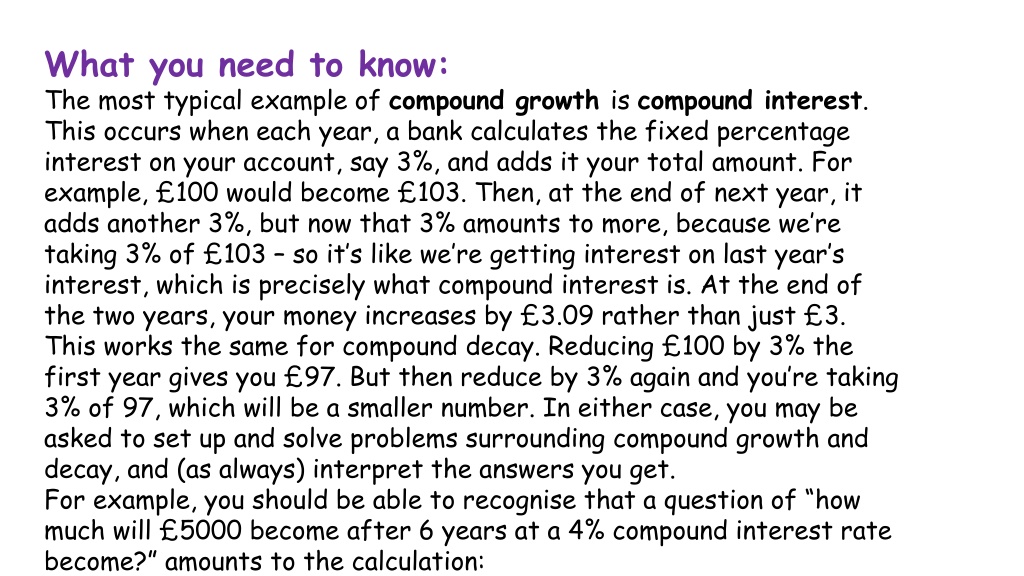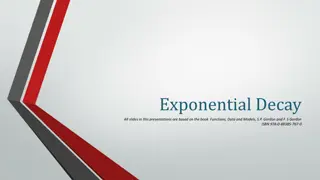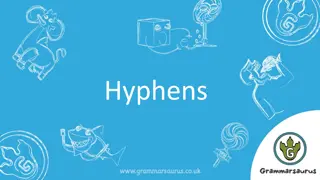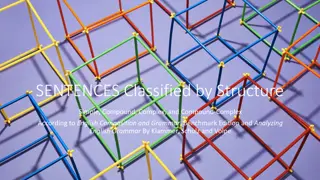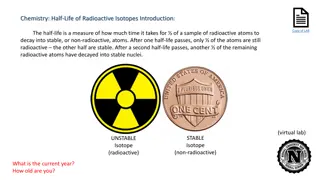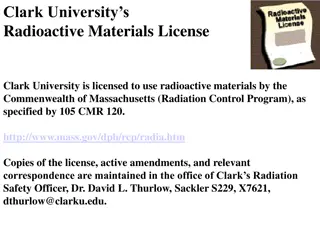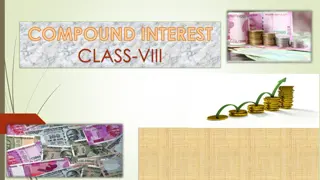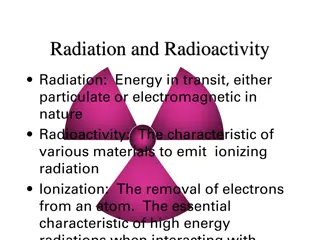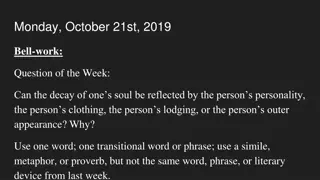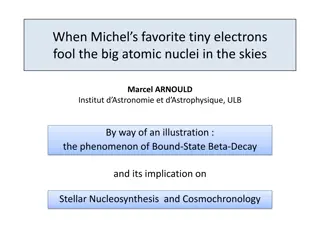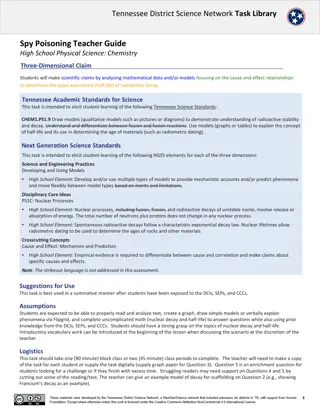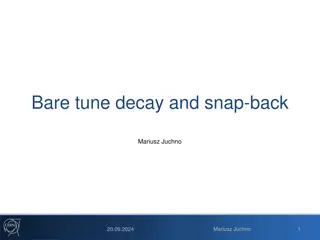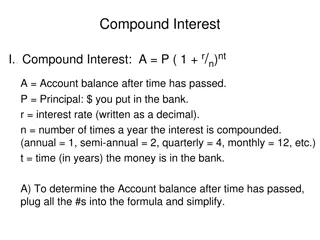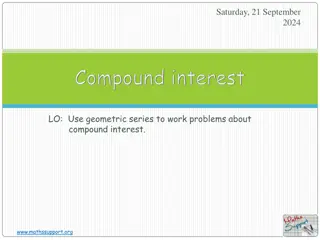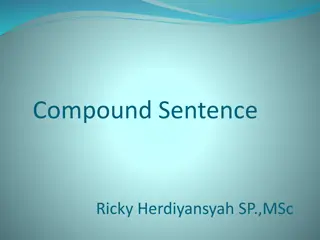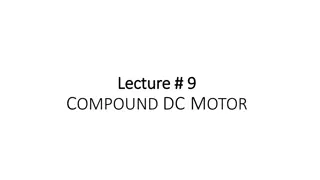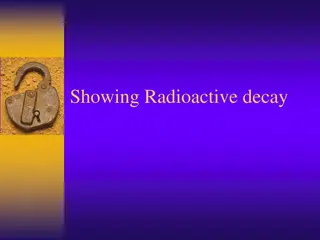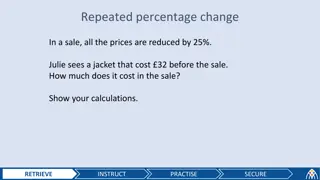Understanding Compound Growth and Decay Through Examples
Compound growth and decay, specifically compound interest, involve calculating interest on a changing total amount over time. This concept is illustrated through various examples and equations, showcasing how investments or values increase or decrease with each period. Learn how to solve problems related to compound growth and decay and interpret the results accurately.
Download Presentation

Please find below an Image/Link to download the presentation.
The content on the website is provided AS IS for your information and personal use only. It may not be sold, licensed, or shared on other websites without obtaining consent from the author. Download presentation by click this link. If you encounter any issues during the download, it is possible that the publisher has removed the file from their server.
E N D
Presentation Transcript
What you need to know: The most typical example of compound growth is compound interest. This occurs when each year, a bank calculates the fixed percentage interest on your account, say 3%, and adds it your total amount. For example, 100 would become 103. Then, at the end of next year, it adds another 3%, but now that 3% amounts to more, because we re taking 3% of 103 so it s like we re getting interest on last year s interest, which is precisely what compound interest is. At the end of the two years, your money increases by 3.09 rather than just 3. This works the same for compound decay. Reducing 100 by 3% the first year gives you 97. But then reduce by 3% again and you re taking 3% of 97, which will be a smaller number. In either case, you may be asked to set up and solve problems surrounding compound growth and decay, and (as always) interpret the answers you get. For example, you should be able to recognise that a question of how much will 5000 become after 6 years at a 4% compound interest rate become? amounts to the calculation:
Starter 1. Increase 75 by 12% = 84 2. Decrease 64 by 16% = 53.76 3. Increase 549 by 4% = 570.96 4. Increase 400 by 5% then by a further 6% = 445.2 5. Decrease 80 by 10% then by a further 25% = 54
number of years new amount = original amount x (percentage)n multiplier
Compound Interest If you put 500 in a bank for 4 years and were paid 3% interest per year, how much would you have? new amount = original amount x (percentage)n = 500 x 1.034 = 562.75
Compound Interest If you put 100 in a bank for 24 years and were paid 4% interest per year how much would you have? new amount = original amount x (percentage)n = 100 x 1.0424 = 256.33
Depreciation A car loses 12% of its value each year. What is it worth after 7 years if it cost 12000 when new? new amount = original amount x (percentage)n 12% decrease = 0.88 new amount = 12000 x 0.887 = 4904.11
Compound Interest 1.If 500 is invested for 3 years at a rate of compound interest of 4% per annum, how much will be in the account after 3 years? 2.Dave invests 3000 at a rate of interest of 6% a year. How much is in his account after 5 years? 3.Glenn invests 7000 at a rate of interest of 2% for 4 years. a.What is the total in his account after the 4 years? b.How much interest would he have gained? c.If he had invested the same amount of money in a different account at an interest rate of 4% for only three years would he have made more or less money? Show your working clearly. 4.Annie invests 1500 at a rate of compound interest of 2.5% for 6 years. How much is in her account after the six years? 5.Harry invests 1000 at a rate of interest of 5% a year. After how many years will he have doubled his investment? 6.Henry invests 4500 at a compound interest rate of 5% per annum. At the end of n complete years the investment has grown to 5469.78. Find the value of n.
Depreciation 1.John buys a house for 219000. The house depreciates in value at 6% each year. What is the value of the house after 7 years? 2.Sam bought his car 13 years ago for 14000. It has depreciated at 26% each year. How much is it now worth? 3.The value of a car depreciates by 15% each year. At the end of 2007, the value of the car was 8490. Work out the value of the car at the end of 2010. 4.Bob s new machine for work cost him 6700. It will depreciate at 28% each year. After how many years will it be worth less than 1000? 5.Bill buys a new lawnmower. The value of the lawnmower depreciates by 20% each year. Bill says after 5 years the lawnmower will have no value a) Bill is wrong. Explain why. Bill wants to work out the value of the lawnmower after 2 years. b) By what single number should Bill multiply the value of the lawnmower when new? 6.A car s value of 12000 depreciates by 12% each year. After how many years will it be worth less than 8000?
Answers Compound Interest Depreciation 1) 562.43 2) 4014.68 3a) 7577.03 3b) 577.03 3c) 7874.05 more 4) 1739.54 5) 15 years 6) n = 4 1) 142 016.59 2) 279.34 3) 5213.92 4) 6 years 5a) Not simple interest! 5b) 0.8 x 0.8 = 0.64 6) 4 years
